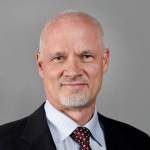ABSTRACT
Active learning pedagogical practices are more effective than instructor-centered teaching in building students’ knowledge, skills, and understanding of engineering content and concepts. As such, a large-scale professional development (PD) program was created to move faculty toward the use of active learning. The project aimed to engage faculty in active learning best practices through workshops and communities of practice to shift their attitudes, beliefs, and practices toward active learning strategies. This paper examines how and to what extent participation in a large-scale PD program shifts faculty awareness of, attitudes towards, and use of active learning. As such, this paper offers a model and evaluation framework for a large-scale PD program, which can be adapted to PD programs in engineering and across other STEM disciplines. In total, 82 faculty members from seven engineering disciplines participated in the PD program, comprising workshops and communities of practice sessions. Multiple assessments were utilized or created to measure the extent of faculty change using Roger’s diffusion of innovation model for individual change and Coburn’s cultural change model for organizational change. Faculty awareness, beliefs, and classroom practice shifted from instructor-centered teaching toward student-centered active learning. Instructors progressed moderately well through Rogers’ five stages of individual innovation change and fulfilled the three tenets of Coburn’s organizational change model. There were only minor shifts in student achievement, particularly for smaller classes, possibly due to insufficient time for instructors to fully implement active learning practices. The PD program influenced the initiation of a sustainable community of new and continuing active learning practitioners in the College of Engineering.
DOI: 10.18260/3-1-1153-36056
AUTHORS
|
|
|
|
|
|
|
|
|
|
|
|








